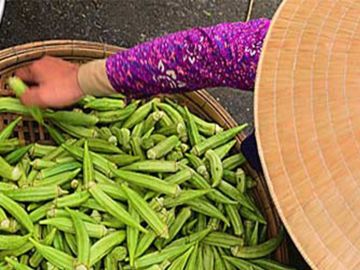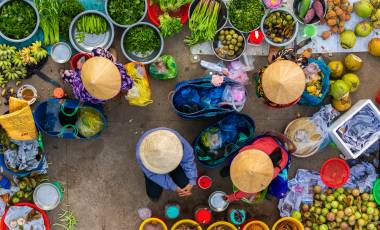Read time – 3 minutes
A culinary journey through Vietnam reveals a deceptive simplicity to a cuisine renowned for its fresh, natural ingredients, aromatic appeal and delicate balance of flavours.
From the mountainous north to the Mekong Delta, Megan Devenish and Sasha Reid sent their tastebuds roving to dish up a banquet of mouth-watering local favourites.
Traffic rushes past in a frenetic mass of cars and bicycles, motorbikes and scooters. Crossing the street is like playing Russian Roulette, but sitting here by the roadside, perched on a plastic stool, cold bia hoi (local beer) in hand and steaming bowls of fragrant phó ga on the table, we have found an oasis amidst the chaos.
A Taste of Vietnam
Vietnam is a food lover’s paradise, especially for those who prize freshness and seasonality above all else. And while the country boasts its share of top-class restaurants and a thriving cafe scene, the streets are the place to be.
This humble Hanoi street vendor alone will turn out more than 300 bowls of phó per day, leaving no time for ingredients to lose their nutritional vigour. An emphasis on freshness aside, Vietnamese cooking strives for a yin and yang of ingredients, a balance between the five fundamental taste elements of sweet, salty, spicy, sour and bitter. The distinctive flavours of Vietnamese food reflect these elements.
Phó
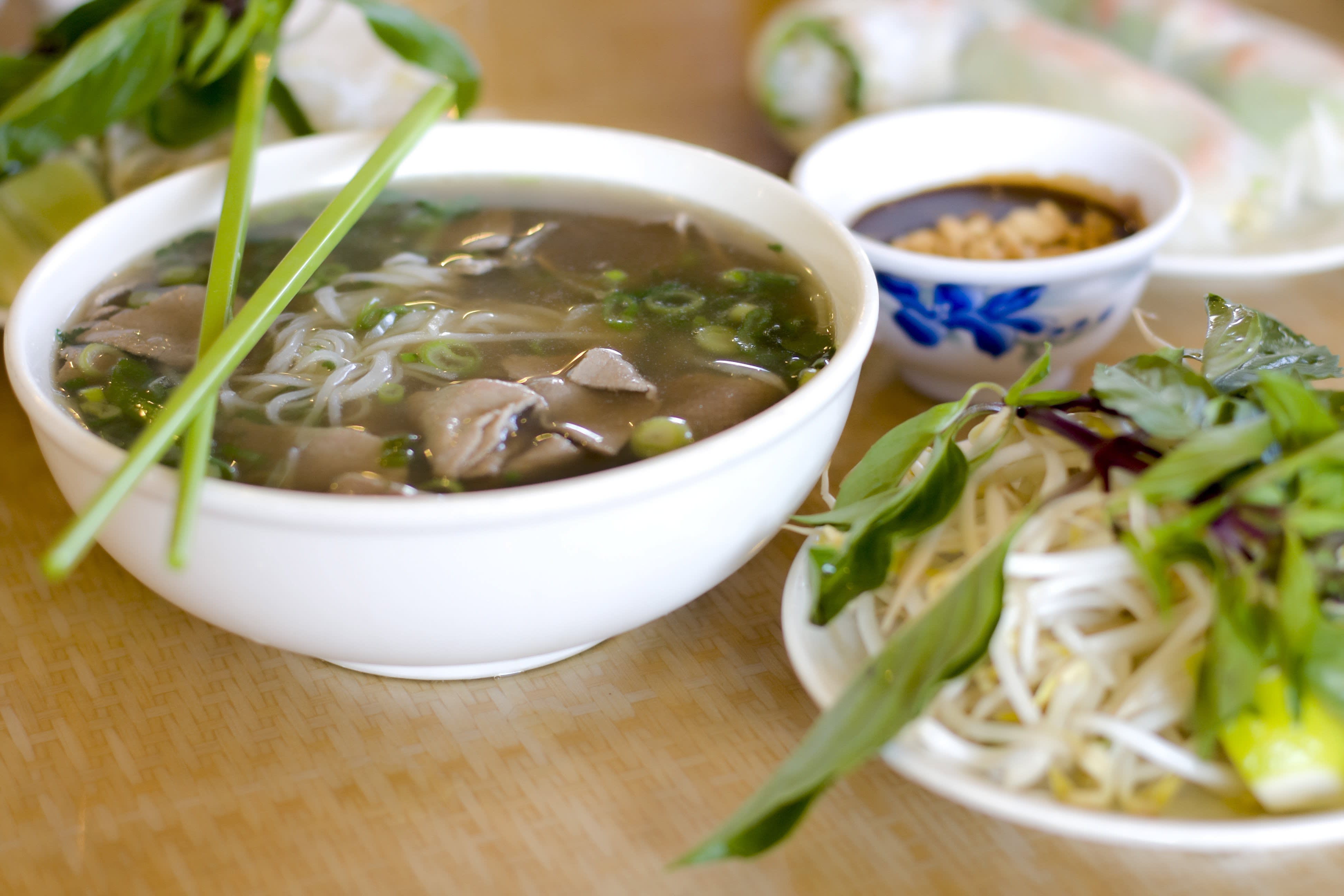 Traditional Phó
Traditional Phó
This classic noodle soup is Vietnam’s revered national dish and is slurped on street corners throughout the country, day and night. Commonly Phó Bo (beef) or Phó Ga (chicken), this is the ultimate street food and probably the most widely recognised Vietnamese dish internationally.
Phó features rice noodles in a broth with meat, vegetables and herbs. You can then fine-tune the flavour with the fresh herbs and sauces provided – turning up the heat with more chilli, adding a squirt of lime or an extra helping of greens.
Phó began life in the north where it tends to be a more basic meat broth, while in the south there is a much more pronounced use of additional herbs and chillies.
Gói cuõn
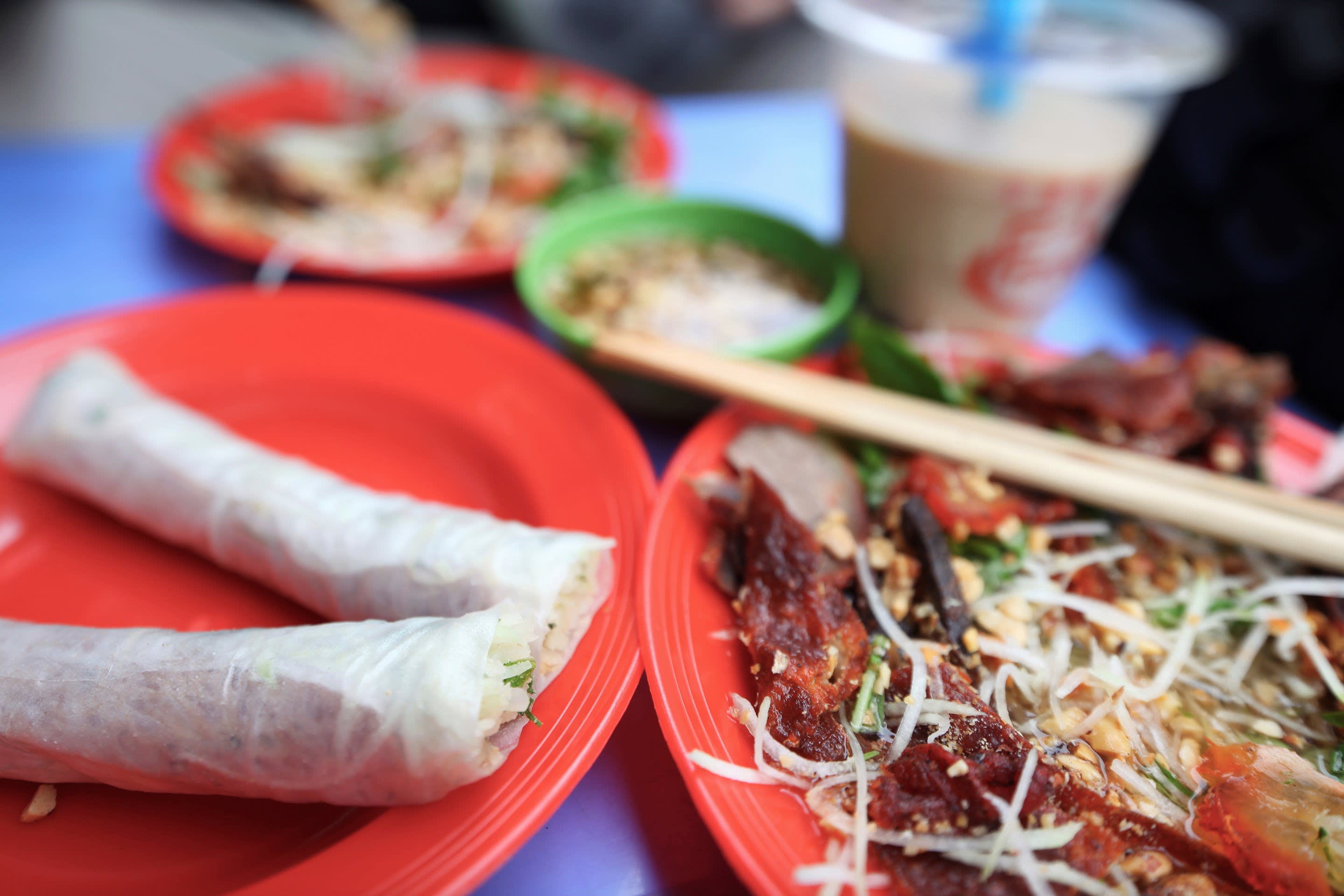
Gói cuõn
Fresh spring rolls, also known as summer rolls, gói cuõn are extremely moreish little parcels made by wrapping prawns, pork, rice vermicelli, vegetables and the all-important fresh herbs (most notably coriander) in rice paper.
Once you have rolled your ingredients up, you dunk your gói cuõn in a sweet soy sauce laced with ground peanuts and let the flavours erupt in your mouth.
Bún chá
Phó might be the national dish, but in the nation’s capital, Hanoi, bun chá reigns supreme over the lunch hour. Small patties of grilled pork and barbequed pork belly are served up in a large bowl of fish sauce-flavoured broth with a good helping of rice noodles and fresh herbs to garnish.
If you’re lucky the bun chá vendor might also chop up a couple of ‘nem’ fried spring rolls and add them to the broth.
Bánh Mí
The legacy of French influence in Vietnam can be seen clearly through the grand dames of colonial-style architecture, but also in the popularity of a freshly baked baguette.
The Vietnamese have, however, taken warm, crusty baguettes to a whole new level. Traditionally filled with pate and pickled vegetables, almost anything goes in bánh mí these days – from pork to pate, cucumber to coriander, chilli to pickled carrot, or even cheese or fried egg. A firm favourite for locals and travellers alike.
Bánh Xèo
Banh xeo, or “sizzling cake”, so named for the loud sizzle when batter meets hot pan, is a delicious savoury crispy crepe. Stuffed to bulging with pork and shrimp, and served with bean sprouts, lettuce and the requisite garnish of herbs including coriander and basil, eating is far from elegant.
Fold up your banh xeo, dunk it into whatever special nuoc cham has been offered and shovel it in! Banh xeo is prevalent in many a Hoi An cooking class as both the making and eating of it tends to be a fun, messy, raucous affair enjoyed by everyone.
Fresh Fruit
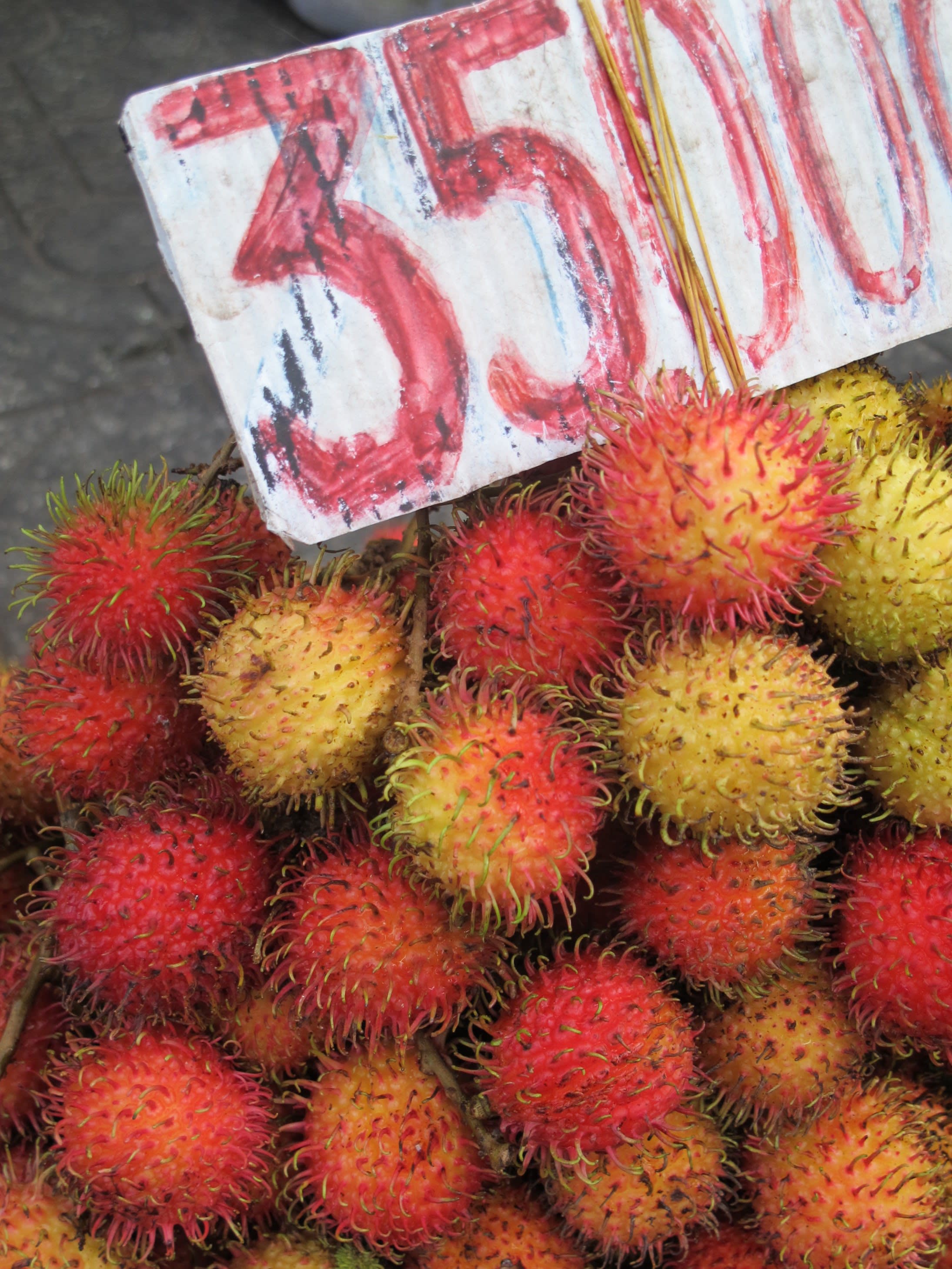
Rambutan
Vietnam has an abundance of exotic fruit on offer, from dragonfruit to mangosteen and rambutan. They make for cheap and refreshing snacks that can be bought readily from markets and roadside stalls.
And we couldn’t possibly omit a special mention of Sinh tô, the fruit smoothie mixed on all good street corners (usually wherever bánh mí or Phó are found). Lychee, passionfruit, mango or even avocado, the choice of fruit is yours but the dollop of condensed milk to get a Vietnamese-style sugar hit is obligatory.
Bon Appétit
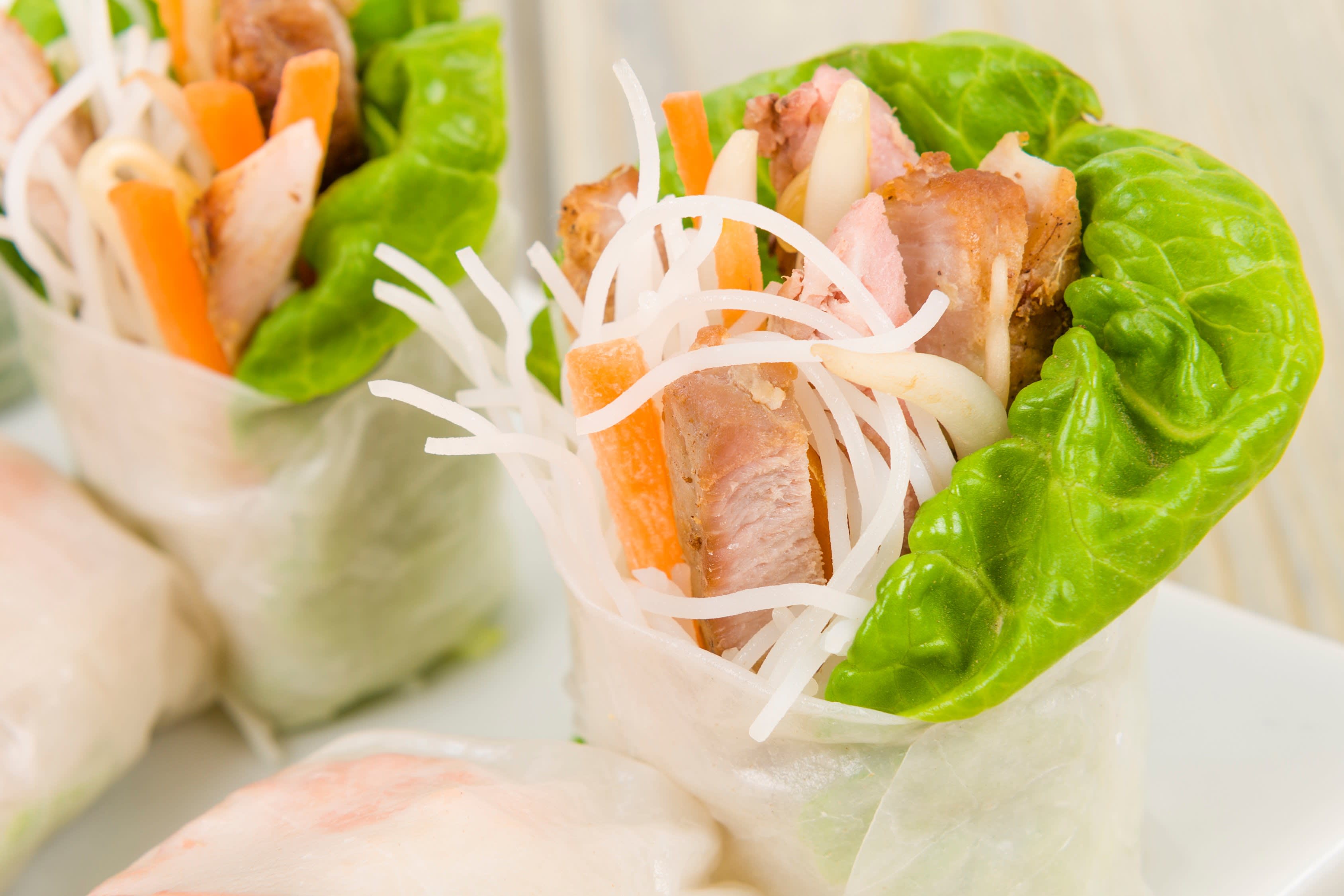 Vietnamese street food
Vietnamese street food
Far from picture-postcard paddy fields and charming backstreets, Vietnam’s cuisine snaps and sizzles. Its aroma assails the senses and invigorates as you slurp and munch, crunch and dip.
What better way to experience a country than by savouring its local produce and finely blended flavours? Food is intrinsic to Vietnam’s appeal, a stomach-satisfying reflection of a vibrant and diverse culture.
Take a look at our tours to Vietnam below and start planning your Vietnamese food adventure.
